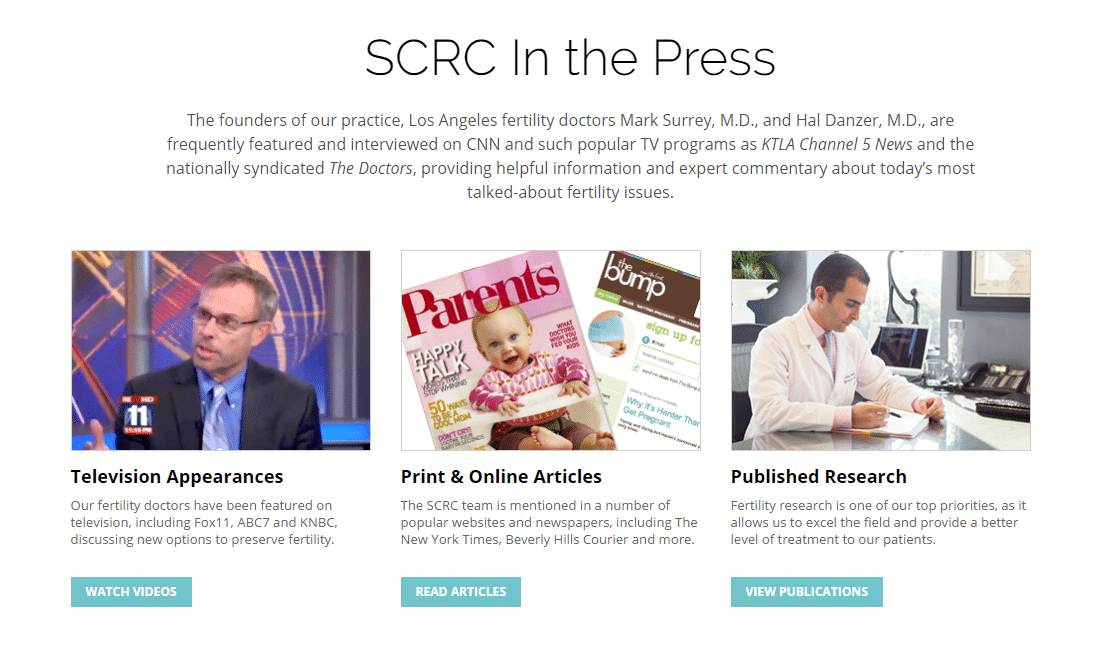Most people will agree that one of the many jobs of a marketing agency is to monitor, manage and improve its clients’ online reputation. At Bonafide, it’s a big part of what we do.
Often it feels like an uphill battle, especially if your client has neglected their online reputation for a long time. But establishing and maintaining a solid reputation is more important now than ever before.
Buyers are searching and vetting companies way before they want to connect with a sales rep. Using a combination of social media, customer review sites and independent blogs, your customers learn a ton about how you do business and form an opinion before they even speak with you. And if you’re not managing your reputation across these and other channels, your voice will only play a small role in the sales process.
Our challenge is to set our clients up for success by making their reputation an important part of this buyer-driven process.
Through our work, we’ve uncovered six key elements to boosting our clients’ reputations and earning trust from prospects.
Let’s dig in.
Position Your Client As a Thought Leader
If you’re going into surgery, would you be more comfortable with Joe from County Medical or the surgeon who pioneered your procedure?
Thought leadership is about positioning your client to be the industry expert.
People want to do business with companies they trust and respect. If you’re an authority in your space, you’ll have a big advantage in the vetting process.
Needless to say, you want to position your client as a thought leader — but how?
Start here:
- Produce 10X content like eBooks, blog posts, white papers, case studies, and the like for both your clients’ website and other authoritative sites.
- Curate and share relevant, helpful information like industry news, blog articles, research and data on social media platforms and within online industry groups.
- Contribute expert-level content to trusted industry publications and leverage their authority and audience.
- Connect and collaborate with existing thought leaders with large followings in the same or closely related niche.
- Comment and engage with popular, relevant threads your prospects are reading on sites like LinkedIn and Quora.
- Speak at industry conferences, then add your presentation slide deck to sites like SlideShare.
- Consistently contribute to niche LinkedIn groups, specialized online communities, and targeted industry blogs.
Here’s an example of how Southern California Reproductive Center, a fertility clinic in Los Angeles, uses thought leadership to earn their clients’ trust:

Include Trust Symbols to Dispel Doubts
When prospects land on a new website, they often arrive with skepticism and a suite of objections. Trust symbols put them at ease and add credibility to your client’s reputation. 85% of consumers think trust symbols are meaningful, and 50% have used them as the deciding factor in making a purchase.
Trustworthy websites usually have:
Graphical logos/badges
Some of the most well-known are Norton Secured and BBB accreditations.
Recognitions or awards
Third-party recognition transfers trust and reputation to your client.
Years in business
Longevity alone can be a powerful indication of trust.
Trust by association
If the big brands trust your client, other prospects will too.
Industry associations
If your client is a member of any industry associations, feature them prominently.
Media/Press
“As seen in” sections build credibility by showcasing media recognition.
Testimonials
Great stories from existing customers inspire trust in new ones.
Earn Positive Reviews to Boost Social Proof
Building positive reviews is key to boosting your clients’ reputation:
92% of people read online reviews of local businesses.
69% of people remember reading positive reviews about customer service, and 88% of those people said such reviews affected their purchasing decision.
Earning positive reviews can be difficult — customers are more inclined to share their negative experiences. And because reviews are a numbers game, if your client has two reviews and one is bad, the negative review will stick out like a sore thumb. But if you build 200 positive reviews with a handful of negative ones, the storyline becomes much different. You’d be hard-pressed to find a business that hasn’t had a run in with a customer that just couldn’t be pleased – and consumers know that.
How to Encourage Positive Reviews
People with a less-than-stellar experience are about 50% more inclined to leave a review – so proactivity is a must when it comes to earning positive reviews.
Strike while the iron is hot – when you have a customer’s attention, you need to make it as frictionless as possible for them to share their positive experience — otherwise they’ll lose interest.
Our favorite tool to facilitate reviews for our clients is Grade.us. Why we like it:
- It takes the reviewer directly to the review site – complete with instructions.
- It diverts negative reviews by redirecting them to a private feedback form instead of a review site.
- We get an instant notification when a new review is left on a property we’re monitoring.
- It’s dead simple to set up (interns can do it).
- It sits on our clients’ domain.
- The list goes on – and they keep adding features we’re excited to implement.
A word of caution when soliciting reviews – be careful about incentivizing positive reviews with contests, prizes, etc. because it’s against the terms of some review sites.
Respond to Reviews to Build Credibility
Bad reviews are almost inevitable and most prospective consumers understand that. And just like earning good reviews – the way you handle bad ones is critical. People want to see how you treat your customers when things don’t go as well as they could have.
Some tips for handling bad reviews:
- Respond quickly.
- Acknowledge their issue and that they were not satisfied with your product or service.
- Thank them for bringing it to your attention.
- Commit to resolving the situation.
- Provide the contact information of a senior employee and ask the reviewer to get in touch for a resolution.
- Explain what you’ll do to ensure it won’t happen again.
If someone on your team is guilty of poor service, it’s important to acknowledge it. If you feel you’re in the right though, accepting blame can be a tough pill to swallow – and rightly so. But it’s important never to respond defensively — or worse – attack the customer. Acknowledging that they were not satisfied is not admitting fault.
Constructive responses to bad reviews make the best of a negative situation. A Cornell study of TripAdvisor hotels found revenue increases when managers responded to negative reviews in a positive manner.
For a real world example, see how Earnhardt Honda responds:
- He apologizes and acknowledges the specific complaint.
- He offers to hear them out and make it right.
- He provides his phone number and email address to make contacting him easy.

One last word of caution here – if you’re in the medical or healthcare space be very careful how you respond to reviews as your comments could land you in violation of HIPAA laws.
Monitor Social Media and Respond
Customers are talking about your client’s brand on social media with or without you. If you aren’t monitoring and participating in these conversations, then you’re missing an opportunity to be a part of these customer-winning and (losing) conversations.
Just like quick and constructive responses to bad reviews can turn negative situations into positive ones, catching and responding to brand mentions is a big opportunity.
Look at how UPS turns a disgruntled customer into a positive interaction:

UPS is doing a few things right. They’ve separated their Twitter handle into a main account and one for support. They take a sincere interest in the customer. They write like humans. And they make it easy for the customer to contact them.
It can be difficult to manually monitor social media for a sizeable brand, so you’ll need some tools. Our favorites are Fanbooster, Hubspot, and Hootsuite. Some other good ones are Mention, Social Mention, and BrandMentions.
Get Involved in Local Communities
Doing good in local communities will also do good for your clients’ reputation. It can help reframe them from faceless, profit-driven corporations to organizations that care about the communities in which they do business. A significant 80% of customers would buy from an unknown brand if they knew it had strong social or environmental commitments.
While doing good is a reward in itself, helping local communities won’t help your clients’ reputation if prospects don’t know about it. You need to get the word out.
Here’s how:
Website
Add a section that details positive community outreach or social commitments. For example, Toms has a section on their site that explains their program that provides children with shoes.
Social Media
Take pictures, share them on social channels, and include hashtags and mentions that will loop in the right people, organizations, and news outlets.
Local Media
Work with media to get mentioned. This isn’t just for local businesses — large organizations can benefit from local media mentions by expanding campaigns across multiple regions.
Final Thoughts
Consumers are no longer relying on you to tell them how great you are. They’re getting their information from other places, and they’re much more in control of the process than they used to be.
Building a stand-out reputation for your clients isn’t complicated — it just takes a lot of work and proactivity.
Rest-assured though, the payoff is huge – a stellar reputation can win business, command higher prices and keep customers coming back for years.
About the Author
Shareef Defrawi
President & Founder of Bonafide. Father of 2 adorable little girls. Counterproductive obsession with productivity. And seriously committed to helping other businesses grow.










